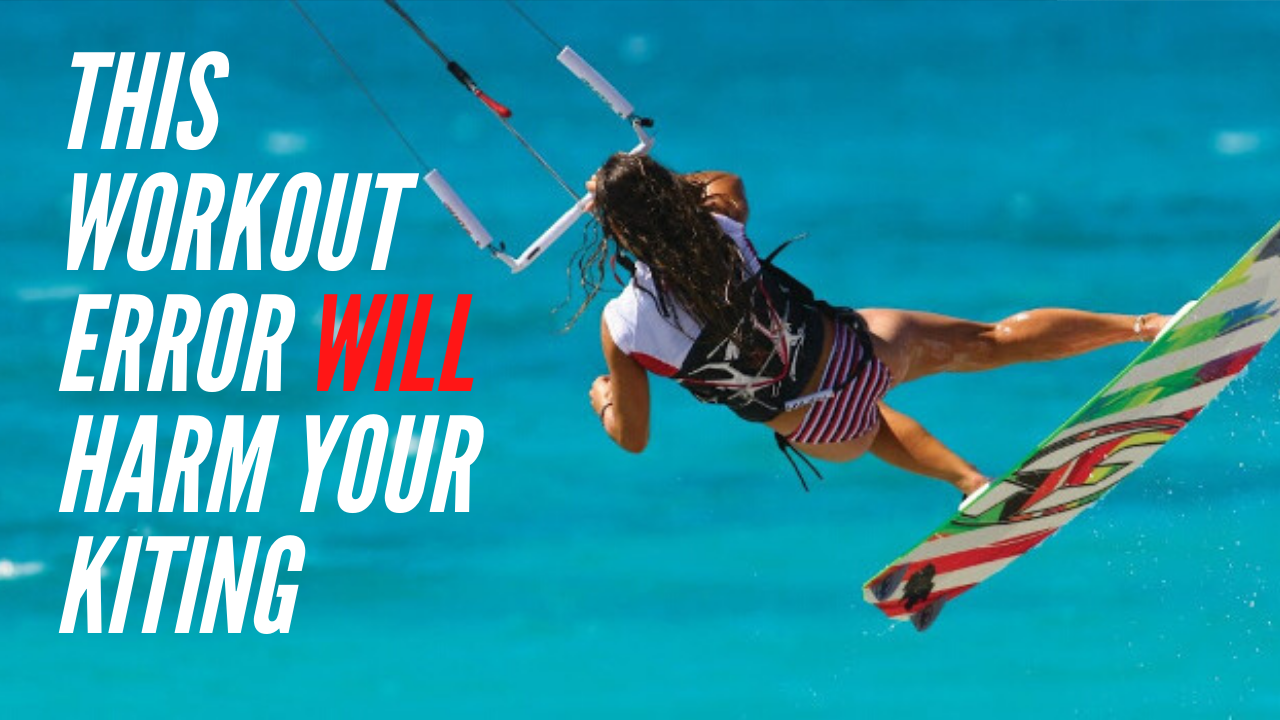
There is one mistake I see kitesurfers making all the time in the gym which can really hurt their performance on the water…

There is one mistake I see kitesurfers making all the time in the gym which can really hurt their performance on the water…
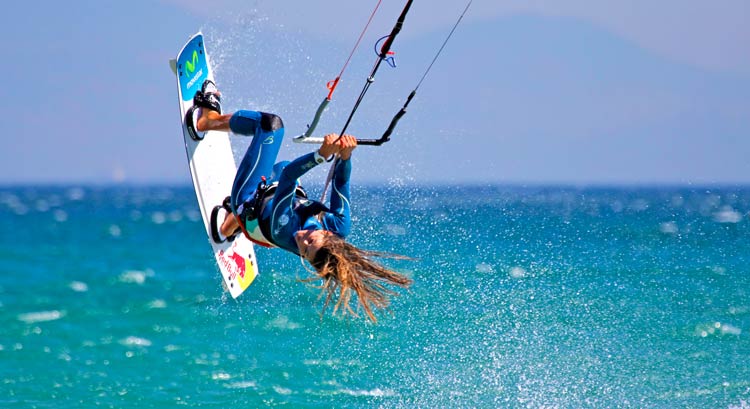
So we talked last week about how static stretching is probably not what you want to be doing before you go kitesurfing…if you missed that post you can check it out here >>
So what can you do instead?
Well the first thing I recommend for my clients is dynamic stretching.
Dynamic (or ballistic) stretches stretch the muscles through movement. Repeated studies have shown they can improve power, strength and performance during a subsequent exercise session. Unlike static stretching which involves just pulling on a specific muscle group, dynamic stretching incorporates posture control, stability, balance and ballistic, explosive movements such as swings and kicks.
Take a simple quadricep stretch, the traditional way of doing this (the way I was taught when I used to play football) was to simply stand on one leg, grab the ankle of the other leg and pull that heel towards your bum, a classic static stretch.
Instead of this, imagine you were to take a giant step forward with your right leg and then grab the ankle of your left foot pulling it up to your bum. Now drop it down and take a giant step forward with your left leg, grab your right heel and pull it to your bum. Suddenly you are incorporating stability, balance and mobility whilst actually contracting the muscles.
All of which makes this a far superior way to stretch.
I would recommend warming up before doing dynamic stretching. Due to its ballistic and explosive nature you are more likely to injure yourself if done from cold than static stretching so a good 10 min cardio based warmup is mandatory.
The other method I use and have most of my clients use, is Deep Tissue Work.
This catch all term refers to anything which gets deep into your muscles and connective tissue. Now there are loads of ways to do this, Rolfing, Muscle Activation Technique, Advanced Muscle Integrative Therapy, Point Therapy, but my favourite (mainly for its ease and accessibility) is foam rolling and simply making love to a spiky Death Star! (Or if you don’t want to buy one of the specialist devices, rolling around on a tennis ball to really get it into all those spots which hurt).
Think of it as a self applied (or inflicted!) deep tissue massage.
When you have areas of chronic tightness or tension, or a history of injury or muscle overuse, adhesions (bands of painful areas) usually form in the muscles, tendons and ligaments. These adhesions block circulation whilst causing pain, inflammation and limited mobility. Which is turn means when you exercise (or just sit around for too long) you create tension in these muscles. Tighter muscles tend to weaken, and a weak muscle tends to tighten…so you get a viscous cycle which increases inflammation, reduces blood flow and lessens the ability of the lymphatic system to remove waste material from the muscle, thus increasing the risk of injury.
Deep tissue work gets in and breaks these adhesions down by applying direct pressure or friction across the grain of the muscle.
The best thing about Deep Tissue work? It doesn’t have to be done directly before or after your kitesurfing, but can simply be something you include in your daily routine. I tend to do 20 mins every morning when I can and the differences after just a few months are HUGE.
Interested to learn more?
I’ve put together a free 7 day kitesurf specific workout plan to get you in shape for kitesurfing designed by kitesurfers, for kitesurfers…
Download your copy here >> (It’s FREE!)
Catch you on the water,
Sam.
??
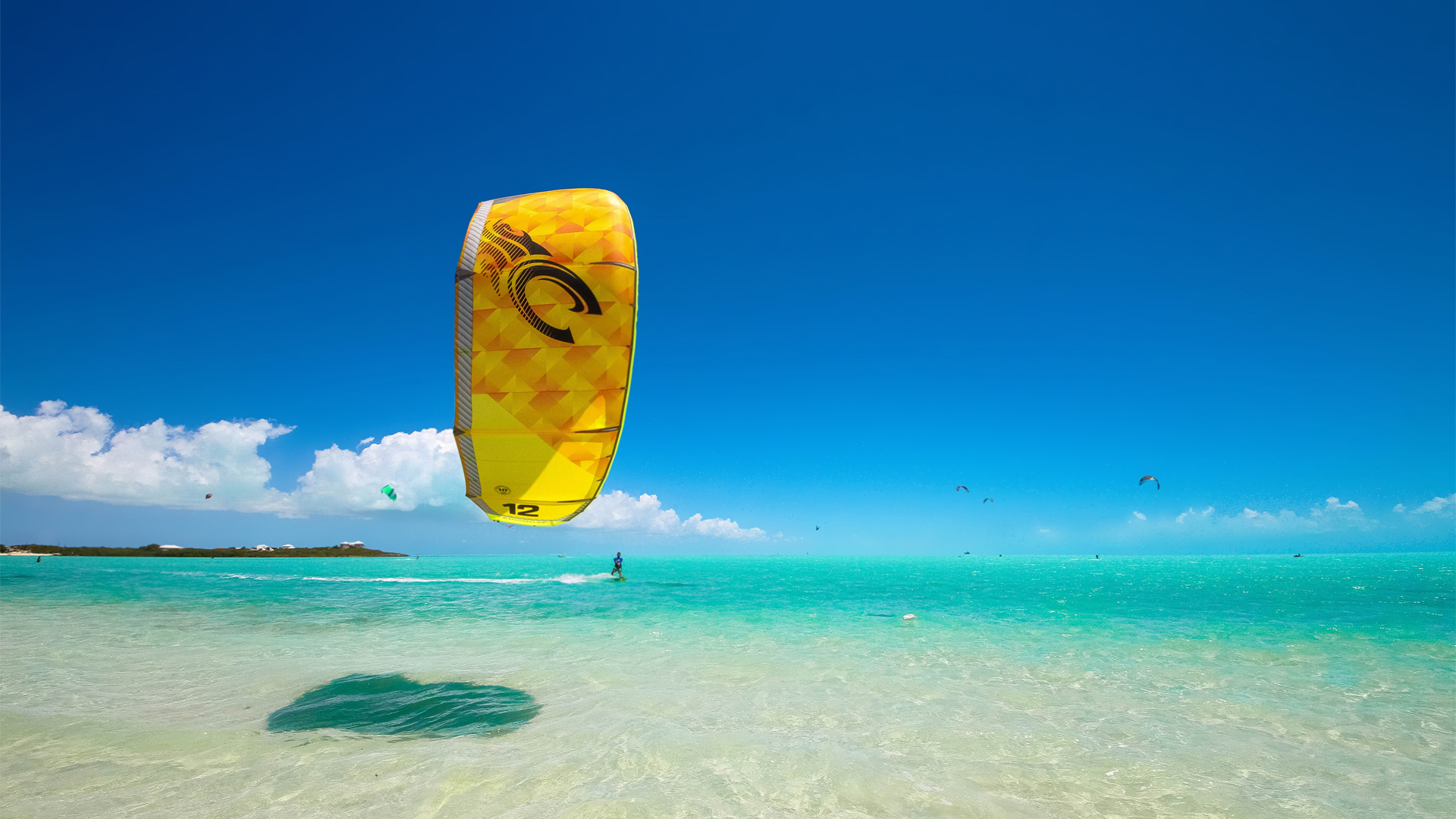
I have a mate and every time we go to the beach he has to spend 20 minutes stretching before he hits the water. Now he also expects me to launch his kite so inevitably I (being the kind and considerate chap I am) end up sitting through his impromptu Yoga session with gritted teeth waiting to get out on the water. At some point through his contortionist act he’ll no doubt call out,
“You should join me you know, you’ll get injured out there if you’re not careful.”
My answer…
“No thank you good sir.” (I swear I’m that polite!)
And yours should be too if you’ve any sense.
Why?
I’m sure if you’re like me, since the age of 0 you’ve been told to stretch before you do any form of exercise. To loosen your muscles up and prevent injury…
Now I’ve always had my doubts about this (and to be honest I’ve always hoped I was right as I was often too lazy to be bothered to stretch) but recently science has got on my side at least for the form of stretching that my mate does.
You see he practices something called static stretching.
This is just the posh way of referring to the stretches which most people do before a workout or hitting the water, you know the bend over and touch your toes type of stretches. To define them a bit better they’re stretches where you get into the stretch position and then hold the stretch without moving.
The problem is that static stretching doesn’t really help your mobility, worse done before a session it can negatively impact your performance on the water. For example a recent study found that runners were on average 13 seconds slower when they performed static stretching right before a one mile up hill run.
In fact several studies have shown that static stretches can inhibit the amount of force a muscle can produce in just about any jumping, running or lifting activity and even worse, it doesn’t reduce your risk of injury.
It all comes down to the fact that making muscles loose and tendons too stretchy before exercise prevents them from producing quick and powerful responses.
Think about it like this, when you’re doing static stretches you’re doing the complete opposite of what you’re trying to achieve on the water as a kitesurfer…
Explosiveness.
That’s not the only problem with static stretching. If your body is already a bit messed up or injured (and lets face it who’s isn’t!) stretching can create more problems.
So if you’re prone to hyper mobility too much stretching can make you…
too stretchy!
Joint hyper mobility, whilst cool at parties, means less ability to produce force and increased risk of cartilage and bone injury.
Another drawback…when you exercise (or kitesurf) frequently your muscle fibres can easily get cross linked, knotted and stuck to one another in a pattern called an “adhesion.”
Think of your muscles as a rope with a knot in the middle. When you pull on the rope at both ends the knot gets tighter and more difficult to untie. This is exactly how static stretching can make things worse if you have poor mobility, adhesions, knots and other tissue issues.
Added to this most people have a set repertoire of stretches they run through again and again meaning that whilst some joints are getting stretchier, other aren’t which can lead to huge imbalances down the line..think of a bicycle wheel with bumps and dents at random spots all over it so it’s really not a circular shape any more at all…
Bumpy ride huh?
But this is effectively what is happening to your body.
So what’s a guy or gal to do?
We’ll be covering that next week but in the meantime I’ve put together a FREE 7 day kitesurf specific workout and I’m giving it away for FREE! you can download it here >>
See you on the water,
Sam.
??
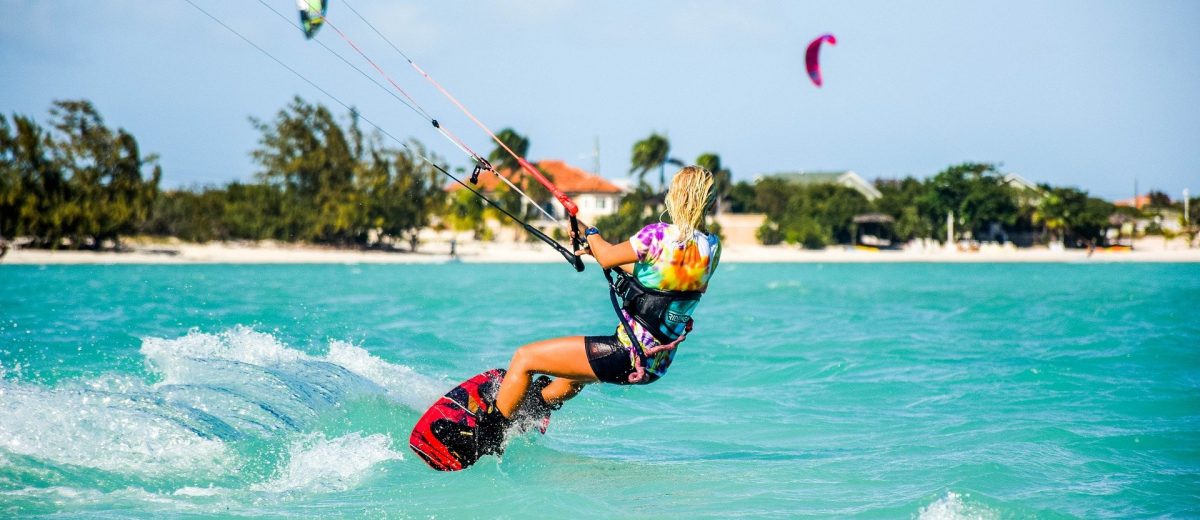
When you ask most kiters what they are doing after a session the reply is surprisingly similar, normally involving the sofa, Netflix and a few beers while they recover and mull over the days session.
“And why not” I hear you say, “I’ve damn well earned it.”
And I wholeheartedly agree.
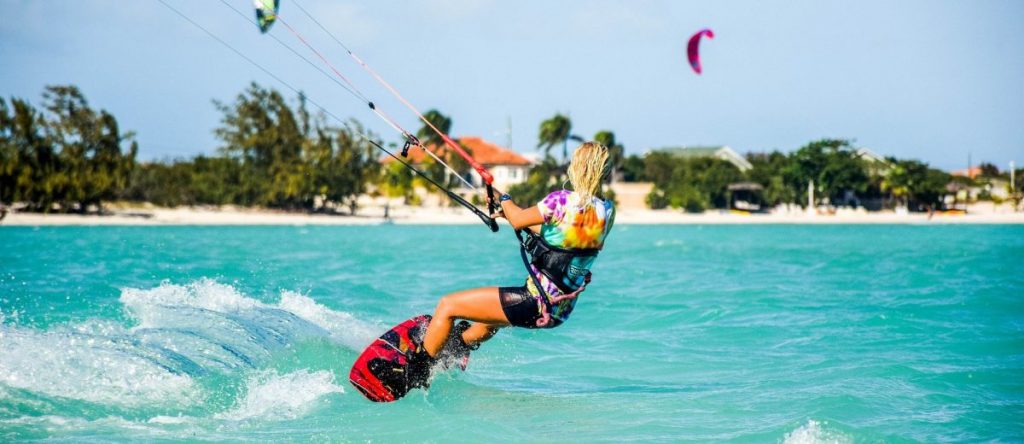
Here’s the thing, since 1960 the number of jobs involving sedentary activity has increased by a massive 83%. Not just that but the increasing comfort of our lifestyles coupled with technology which makes our lives easier at every turn has led to most of us being sedentary for the majority of our lives, even when we’re not sitting in front of a screen.
Dr. Richard Weiler, who’s credentials include physician for a British premier league football club and Senior Sports Physician at the British Olympic Association, looked into what his footballers did off the pitch.
What he found was surprising.
About 80% off pitch time was spent in sedentary states. His findings have been confirmed across other sports including American Football and Rugby. I would bet the same holds true for kitesurfers as well…in fact a short survey I did at the beach recently certainly seemed to point in this direction.
Scientists have known for a long time that not moving much for long periods of time is inherently bad for us. It changes the expression of a multitude of genes which in turn leads to rising inflammation, a down regulation of cardiovascular health and a whole host of other effects, none of which are good.
The bad news…
all it takes is around 2 hours of sitting and these effects start to manifest themselves. Most of us are sedentary for much more than this on a daily basis.
In fact having tracked my own inactive time using my Oura ring I still average around 5-6 sedentary hours a day, and I’m the most active person I know.
“No worries,” I hear you cry, “I work out” or “I kitesurf.”
Well here’s the real kicker. It seems a short burst of exercise doesn’t help.
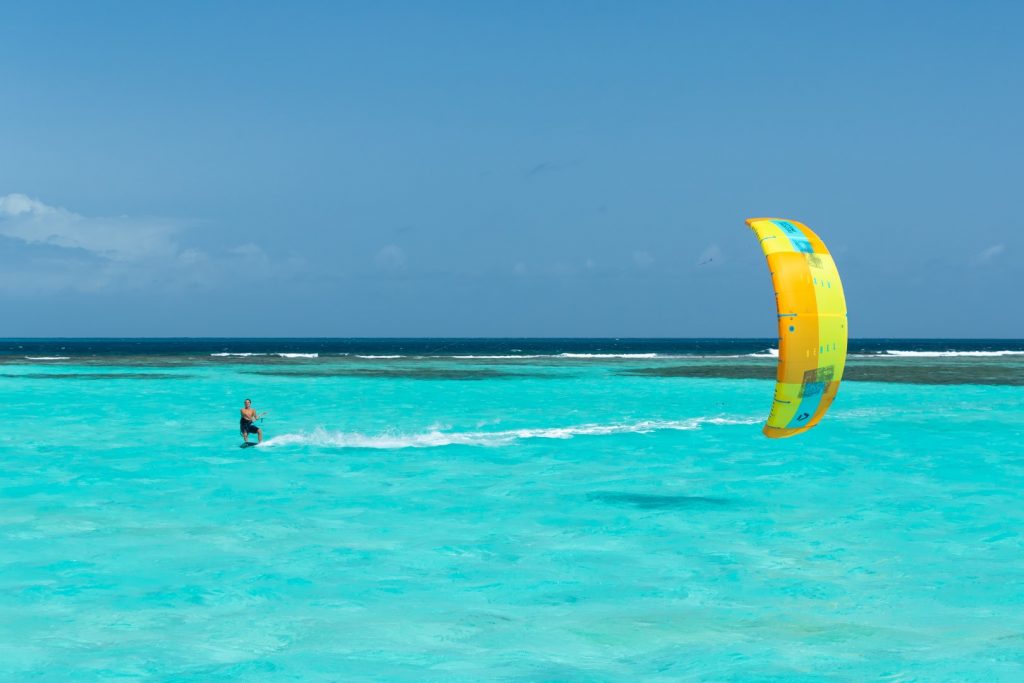
Indeed it seems these changing gene expressions and the effects they cause react to low level physical activity levels over the entire day. So a sudden burst of exercise wont fix it. You can’t do cross fit in the morning and then hit the sofa for the rest of the day, you need to be constantly micro moving to keep that low level of physical activity high to keep these genes switched off.
However for most of us when we’ve done a good workout or had a decent session on the water we think we deserve a rest and so tend to take it easier for the rest of the day. It’s called the “compensatory effect,” similar to how you think you’ve earned that chocolate muffin after a session at the gym.
Now, this is actually good news (especially for those of you who hate formal exercise) as the solution is relatively simple.
Move for 5 – 10 mins every hour.
Get up and go for a toilet break, do some press ups, get a standing desk or even better a walking desk, go for a walk on your lunch break. Hell, you really don’t need me to tell you how to do this, just try to build things that work for you into your day.
To help you with this I’ve put together a 7 DAY KITESURF SPECIFIC Workout Plan and I’m giving it away FREE!
Just click the button below to download it.
See you on the water,
Sam.
??
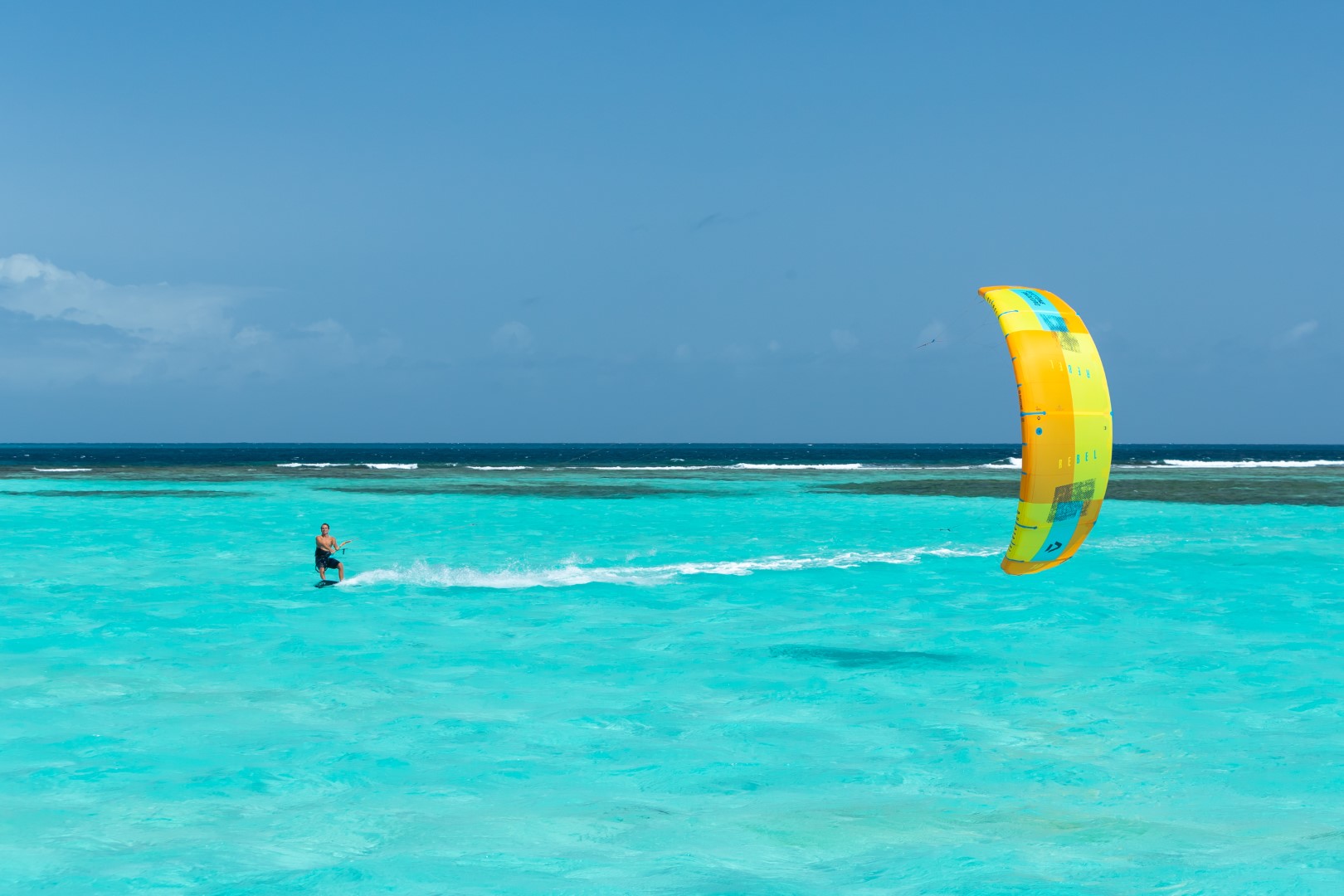
We have all heard of the major muscles, the biceps, the pectorals, the hamstrings etc. Supporting these muscles and ensuring they move in the right way are much smaller muscles, one’s we generally haven’t heard about.
Let me introduce you to the stabiliser muscles, these are a kitesurfers secret weapon.
When we go to gym and particularly when we use machines designed to focus on these major muscles, these stabiliser muscles generally do not get activated (this is compensated for somewhat by using free weights).
When we then come to do a dynamic sport like kitesurfing because they haven’t been trained, these smaller muscles become tired very quickly.
As they tire the major muscles are forced to take up more and more of the work normally done by these smaller muscles or in many cases it simply doesn’t get done at all.
This leads to the major muscles getting tired more quickly and also increases the chance of injury as these muscles are no longer secured effectively and may flex in directions they are not designed to.
These stabiliser muscles are also heavily involved in our ability to balance, which is crucial in kitesurfing.
The best way we have found of doing this is using a balance board.
You don’t have to spend 100’s on this, I picked one up for about 20€ and you can fairly easily make your own if you’re so inclined.
Simply by standing on the board (extra points for actually doing your workout on them!) for 5 mins a day you’ll be firing all those stabiliser muscles over and over again and will quickly bring them up to strength.
Meaning they will be able to take more of the strain during your kitesurfing so the major muscles don’t tire so quickly, improving you stability and reducing your chances of injury. You’ll also notice improved balance as these muscles are heavily involved in keeping you aligned and in balance.
As an added bonus a balance board also targets the stomach and lower back.
As the primary power transfer point between the kite and the board (as it’s where your harness sits) this area is of major importance in maintaining posture and ensuring maximum efficiency whilst riding.
Well to start with, just standing on the damn thing for 5 mins a day should be enough.
Don’t be surprised if the first few times you try this you find yourself wobbling all over the place, it’s normal and quickly improves.
Start small and build up, this can be surprisingly tiring and better to start with 5 mins and then build up than go for 30 mins and struggle to walk the next day!
Once you’re happy doing this you can move to standing on the board one footed, striking yoga poses and even doing your more normal exercises on the board, bicep curls with free weights while stood on the board is a great example.
You can also use it the other way, so push ups while supporting your hands or feet with the board can be an interesting exercise to try.
Just by doing this for a few weeks you’ll start to notice profound improvements in your stamina and general fitness on the water.
One final piece of advice, give yourself plenty of room!
See you on the water,
Sam.
??
Got The FREE Kitesurf Specific 4 Week Workout…
If you want to improve your kitesurfing when you’re OFF the water, so you have more stamina for kiting, recover faster in between sessions, get injured less and look great in your wetsuit ?, download the FREE 4 week kitesurf specific workout here >>